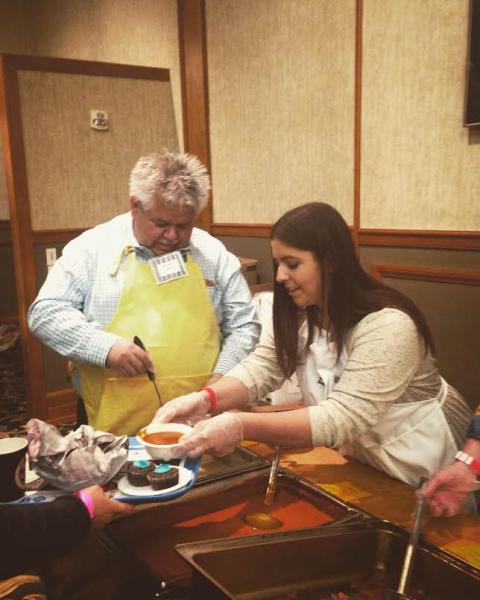Feed the Need
With National Nutrition Month’s theme of “Savoring the Flavor of Eating Right” motivating millions to lead a healthier lifestyle, I often find myself reflecting on the public health nutritional implications on food insecure populations. When a family is food insecure, they may not know what their next meal will be. What happens when your SNAP runs out? This is a question many families face on a monthly basis. If a family receives food from a food pantry, this supplemental food can help them get by until the end of the month. However, with some food pantries, there is limited autonomy when it comes to what food items someone will receive. There are food pantries that are set up to let clients choose and “shop” for what they want, and then there are some that are more of a one-stop shop and only have pre-bagged food items. Where this is the case, you have no idea what’s inside the package, and the healthy decision making process is completely taken out of the equation. With all these limitations, it can be difficult for food insecure individuals to make the healthiest decisions surrounding food.
Throughout my service, I’ve been able to witness food pantries give their clients complete autonomy while also providing fresh fruits and vegetables. I’ve also seen the other side, where a client walks in, picks up a few bags of pre-bagged shelf-stable food, and leaves. As a nutrition educator working closely with food insecure children, adults, and families, I’ve had the opportunity to learn and educate individuals on ways to make their meals healthy, inexpensive and fun.
● Small steps: When educating others on how to begin a healthy lifestyle, it’s crucial to start with small steps. The two most valuable pieces of nutrition information I’ve learned are to reduce sodium in canned goods by rinsing them, and to find food items with the fewest ingredients. Reducing sodium in canned goods by rinsing them: Rinsing canned goods will reduce the sodium content by 41%. If you only have access to canned beans, for example, or don’t have the time to cook your own, this is a great way to control some of the salt in your meal. Finding food items with the fewest ingredients: in today’s industrialized food world, foods like bread, which inherently have only 3 or 4 ingredients, have been modified with salt, sugar and preservatives. As a result, bread is no longer a healthy option. One of the most popular recipes I make is Banana Pancakes. One of the things I like to talk about is what to top your pancakes with. I always bring some honey and maple syrup to show the differences in the ingredients list. On a bottle of honey the ingredient list is simply honey, whereas the ingredient list for maple syrup is corn syrup, caramel color, artificial flavors and food additives such as sodium hexametaphosphate, sodium benzoate, potassium sorbate and sulfur dioxide.
● Limit waste: One of my main goals as a nutrition educator is to try to encourage individuals to incorporate more produce into their everyday meals. However, produce can be expensive, so it is crucial to make the best use of it. Remember to keep produce that you receive or purchase at room temperature on the counter. If your produce needs to be refrigerated, don’t overcrowd your drawers, this will make them spoil faster. Also, don’t store fruits and vegetables near apples or bananas, for they give off high quantities of ethylene gas that also makes produce ripen faster. If you have fruits or vegetables that have gone limp or are starting to wilt, throw them in a freezer bag and use them for homemade broth/stock. If you have too much of one ingredient like kale, for example, simply blanch it in a pot of boiling water, drain, and freeze it in a freezer safe bag for up to a year.
● Cook with others: Being the family-based lead nutrition educator, I’ve had the opportunity to do cooking demonstrations with families where both the children and their parents are involved. I can’t express enough how much more fun it is to cook with someone. There is one thing in cooking that most Americans are lacking when it comes to creating a healthy meal, and that is time. We are constantly busy, so a quick already-prepared meal sounds intriguing and less stressful. However, when it comes to cooking healthy food, the best way to do this is by preparing your own meals. Cooking is an essential part of life that has notoriously become a chore, just like doing laundry or cleaning the house. Get your friends and family involved in cooking. Find a way that makes cooking fun for you.
If you’re interested in learning more, check out these food documentaries that take a look into food security, and/or the effects that industrialized food systems have on nutrition:
A Place at the Table (2012)
Cooked (2016)
Dive! (2010)
Hungry for Change (2012)
Fed Up (2014)
Thought for Food (2013)
We Feed the World (2005)
Ingredients: The Local Food Movement Takes Root (2009)
